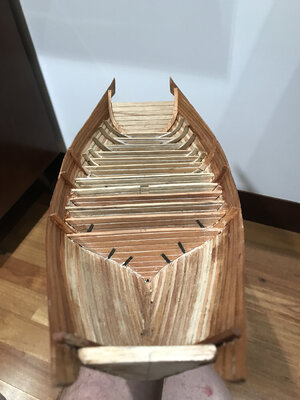by the way some of you know to “fabricate” “real” scale bamboo? This is going to be my next challenge
-

Win a Free Custom Engraved Brass Coin!!!
As a way to introduce our brass coins to the community, we will raffle off a free coin during the month of August. Follow link ABOVE for instructions for entering.
You are using an out of date browser. It may not display this or other websites correctly.
You should upgrade or use an alternative browser.
You should upgrade or use an alternative browser.
Quanzhou Ship - Chinese Junk 13th Century 1:54 by Schrader
- Thread starter Schrader
- Start date
- Watchers 11
-
- Tags
- chinese junk
As some of you know me...... let you guess...... I did not like it. The final result was not that good. Mono color and it did not look natural. The real thing was bamboo slices......
So I decided to go for a new tryout....
Lighter and thinner cardboard....
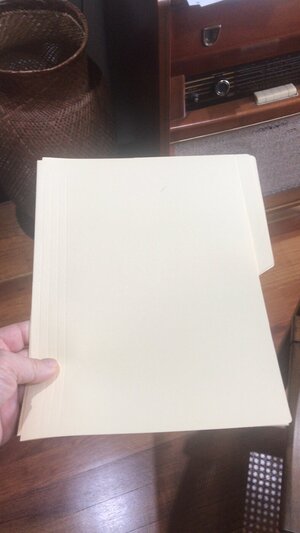
Some vinyl paint....
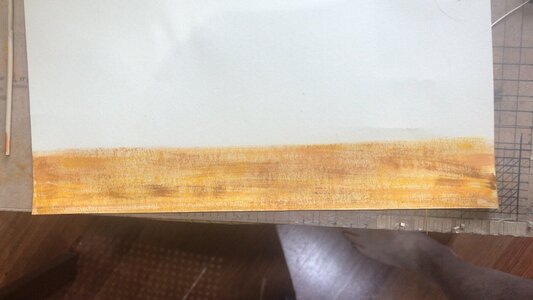
Cut it in 1mm stripes
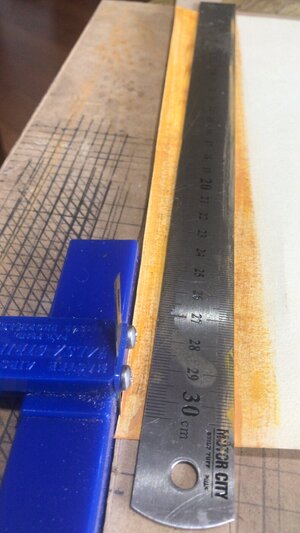
And......
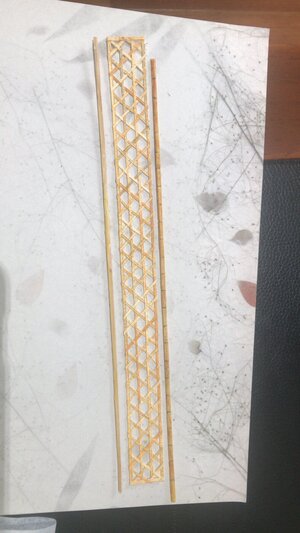
And also you can see I ”solved” the bamboo fabrication. .......
.......
1. Bamboo brochettes sticks
2. Cut them in halves
3. Knife 11 to simulate knots and......
Sharpies......
Black for the knots....
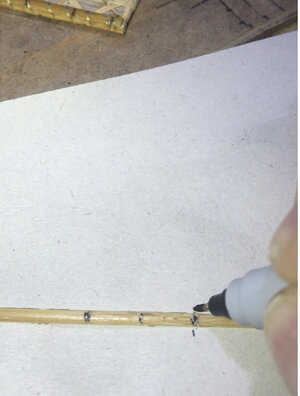
orange.....
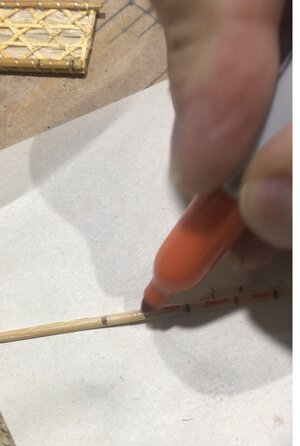
And yellow to dissolve the orange....
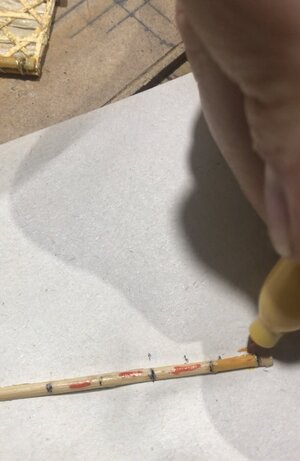
This is the result...

Definitely it looks better !!!!
For the interior “sandwich” the real thing use to be either bamboo sheath or some kind of natural fiber....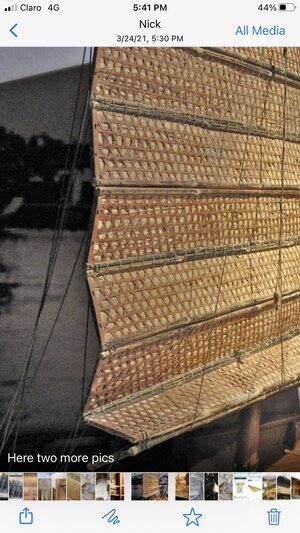
so I decided to use Raffia fiber....
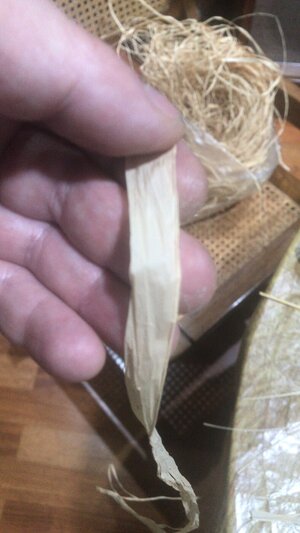
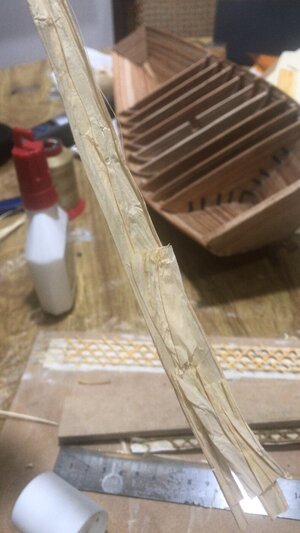
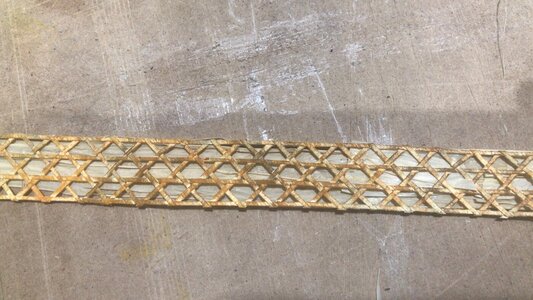
Make the sandwich and ”install” the bamboo
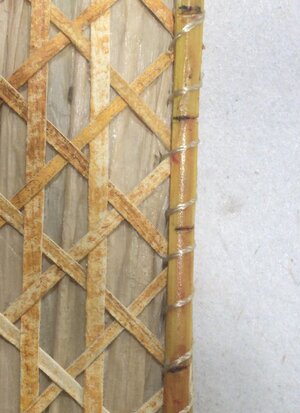
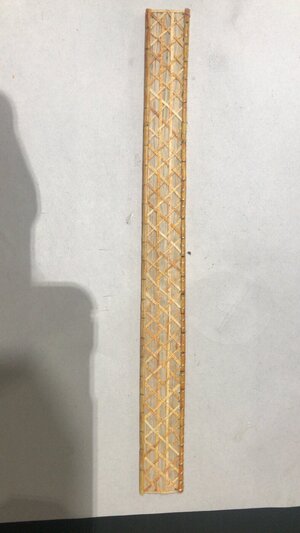
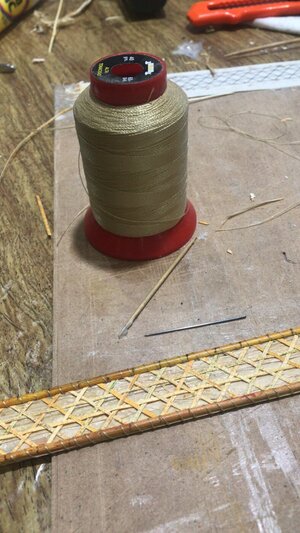
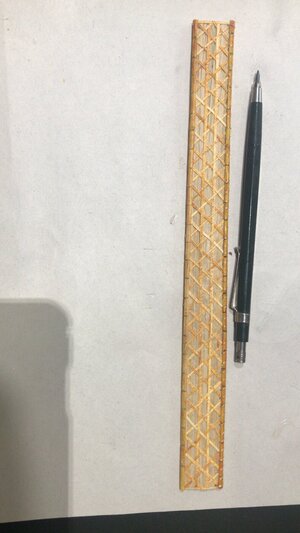
Now we are talking......
So I decided to go for a new tryout....
Lighter and thinner cardboard....

Some vinyl paint....

Cut it in 1mm stripes

And......

And also you can see I ”solved” the bamboo fabrication.
1. Bamboo brochettes sticks
2. Cut them in halves
3. Knife 11 to simulate knots and......
Sharpies......
Black for the knots....

orange.....

And yellow to dissolve the orange....

This is the result...

Definitely it looks better !!!!
For the interior “sandwich” the real thing use to be either bamboo sheath or some kind of natural fiber....

so I decided to use Raffia fiber....



Make the sandwich and ”install” the bamboo




Now we are talking......
It is amazing how much research you made and attention to such details. Bravo! I like it more and more...
Thanks to you all. For your likes and comments
It is time to come Back......
In the meantime I was trying to figure it out how the finishing could be since no one has ever seen this ship
After so many attempts finally I made this drawing...... which it adjusts in many ways to what we can find from that age and location.....
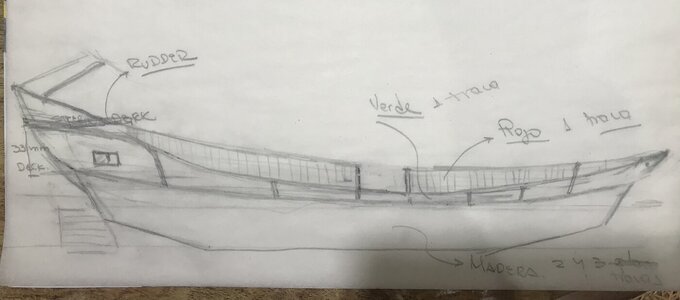
So I decided to go for it.......
First the extra height to build the “fences”
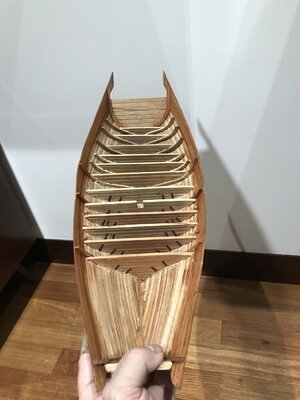
Then... the second plank layer...... lets remember
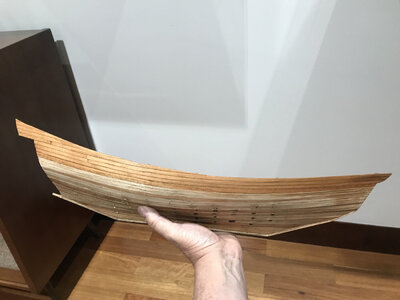
Then... the second plank layer...... lets remember
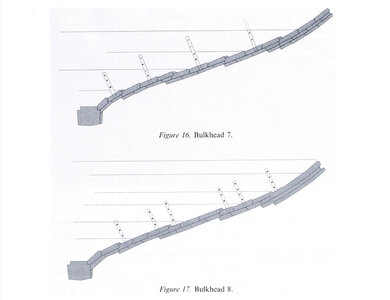
So since those plank were made mainly of pine.... I took a tropical wood name Chingale, because the color and appearance......
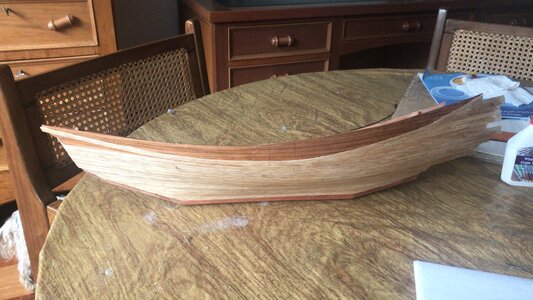
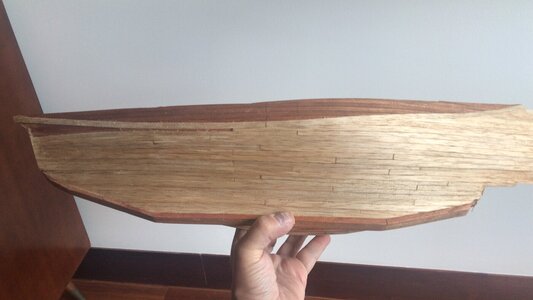
Some “ornament” and starting the third plank layer...... this one was used more like a wale in those ships
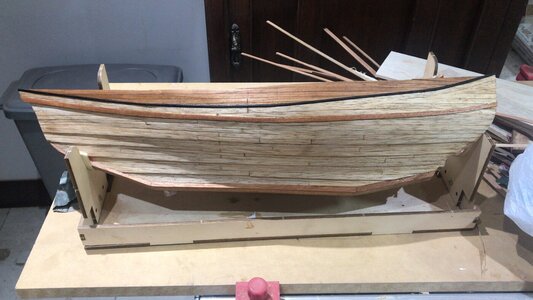
And finally with the third plank layer is going to look like this, with some other ornaments to install
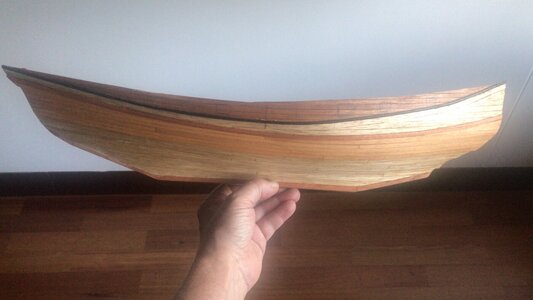
Yet.... more to come. I liked so I’ll start the starboard side........
Regards
In the meantime I was trying to figure it out how the finishing could be since no one has ever seen this ship
After so many attempts finally I made this drawing...... which it adjusts in many ways to what we can find from that age and location.....

- Those ships did not have a lot of decorations
- Not big color production other than white ( comes from lime) is known
- The drawing is pretty much accepted by the archeologists due its simplicity.
So I decided to go for it.......
First the extra height to build the “fences”

Then... the second plank layer...... lets remember

Then... the second plank layer...... lets remember

So since those plank were made mainly of pine.... I took a tropical wood name Chingale, because the color and appearance......


Some “ornament” and starting the third plank layer...... this one was used more like a wale in those ships

And finally with the third plank layer is going to look like this, with some other ornaments to install

Yet.... more to come. I liked so I’ll start the starboard side........
Regards
Attachments
Last edited:
- Joined
- Jan 9, 2020
- Messages
- 10,534
- Points
- 938

Dear Hellmuht - that looks absolutely stunning. I have also started on a sampan in anticipation and preparation of other Chinese modeling subjects - be they junks or sampans. My research has shown that wood choice was down to the individual shipwright and depended mostly on the area where construction took place. It does seem though that cedar wood was a variety widely chosen with fir wood also used in the construction. Fujian (Foochow) pine was mostly used on junks and sampans built in that area.
I agree with you that those ships were not richly ornamented. Interestingly, Shicheng Model Company (based in Huangzhou, China) released a model of the Huaguangjio Reef I, also known as the Huaguang Reef I a while ago, which is apparently based on an extremely well-researched model found in the Museum of the South Seas in Hainan.
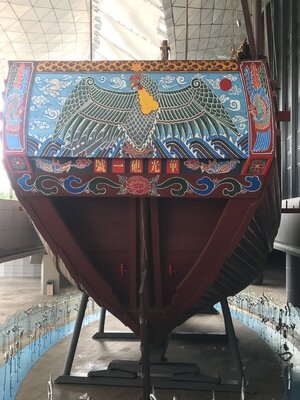
This one features the almost obligatory Phoenix on the transom.
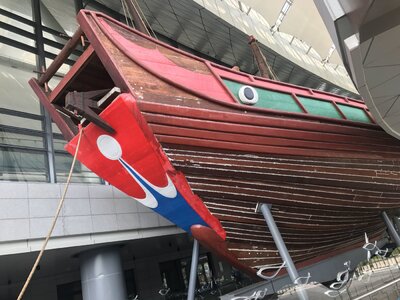
And indeed some decorations and color - including the "Guiding Eye". In both cases though, you can see that your interpretation of the clinker planking is spot-on!
I can't wait for you to continue.
I agree with you that those ships were not richly ornamented. Interestingly, Shicheng Model Company (based in Huangzhou, China) released a model of the Huaguangjio Reef I, also known as the Huaguang Reef I a while ago, which is apparently based on an extremely well-researched model found in the Museum of the South Seas in Hainan.

This one features the almost obligatory Phoenix on the transom.

And indeed some decorations and color - including the "Guiding Eye". In both cases though, you can see that your interpretation of the clinker planking is spot-on!
I can't wait for you to continue.
Thanks a lot!!! For your kind words. And thanks for your input. That should be a really interesting model to work with
By the way HeinrichDear Hellmuht - that looks absolutely stunning. I have also started on a sampan in anticipation and preparation of other Chinese modeling subjects - be they junks or sampans. My research has shown that wood choice was down to the individual shipwright and depended mostly on the area where construction took place. It does seem though that cedar wood was a variety widely chosen with fir wood also used in the construction. Fujian (Foochow) pine was mostly used on junks and sampans built in that area.
I agree with you that those ships were not richly ornamented. Interestingly, Shicheng Model Company (based in Huangzhou, China) released a model of the Huaguangjio Reef I, also known as the Huaguang Reef I a while ago, which is apparently based on an extremely well-researched model found in the Museum of the South Seas in Hainan.
View attachment 243043
This one features the almost obligatory Phoenix on the transom.
View attachment 243044
And indeed some decorations and color - including the "Guiding Eye". In both cases though, you can see that your interpretation of the clinker planking is spot-on!
I can't wait for you to continue.
the wood I use other than Chingale is Cedar. It can be found in different tones. So I try to choose a same tone for different ship parts.
other interesting detail is the white caulking!!! By then they used a mix of lime, tung oil and most probably bamboo fibers
regards
- Joined
- Jan 9, 2020
- Messages
- 10,534
- Points
- 938

You are 100% correct about the caulking that was used. The lime, by the way, was manufactured from oyster shells and the shells had to be of high quality. If tung oil was not available, fish oil could also be used. The fabric/fibers that were used had to be silk-like. Once the caulking was done, the planks would receive a final layer of tung oil and ash would be rubbed into the seams.
Hallo my friend Hellmuht alias @SchraderIn the last days, I’ve been studying a lot of things about the Chinese Junks at the same time, thinking about which could be my next project. Finally I reached the conclusion that the Quanzhou Ship, which was discovered in 1973 and dated from the 13th century, would be a real challenge, as well a really interesting way to understand these magnificent vessels.
This ship contradicts several theories that were known for certain by then, and with this log, I’ll do my best to show them all to you
I’ve chosen 1:54 scale, since (according with estimations) this ship was about 28 m length and 10 m beam. So with the convention the model will be aprox. 52 cm long, “matching” my preference about model size.
Let’s start !!!!!
Some Pictures
we wish you all the BEST and a HAPPY BIRTHDAY
Enjoy your special day and celebrate your 60th with your family and friends

I am in my thoughts with you and drink a glas of wine - Cheers
Happy Birthday, Hellmuth! Wishing more happy and healthy years ahead! 

Thanks to you all!!!!
I really appreciate your kind words
I really appreciate your kind words
- Joined
- Jul 22, 2017
- Messages
- 331
- Points
- 268

Hola mi querido amigo. First of all, happy belated birthday. It has been far too long since I've visited your build log and I am extremely happy with all the results you have accomplished. I was pleasantly surprised and amazed at how you were able to tackle your sails. They truly look amazing. I look forward to more of your updates.
Tu amigo,
Raymond
Tu amigo,
Raymond
Hallo my friend, hallo @SchraderIn the last days, I’ve been studying a lot of things about the Chinese Junks at the same time, thinking about which could be my next project. Finally I reached the conclusion that the Quanzhou Ship, which was discovered in 1973 and dated from the 13th century, would be a real challenge, as well a really interesting way to understand these magnificent vessels.
This ship contradicts several theories that were known for certain by then, and with this log, I’ll do my best to show them all to you
I’ve chosen 1:54 scale, since (according with estimations) this ship was about 28 m length and 10 m beam. So with the convention the model will be aprox. 52 cm long, “matching” my preference about model size.
Let’s start !!!!!
Some Pictures
we wish you all the BEST and a HAPPY BIRTHDAY

I hope you are well .......

